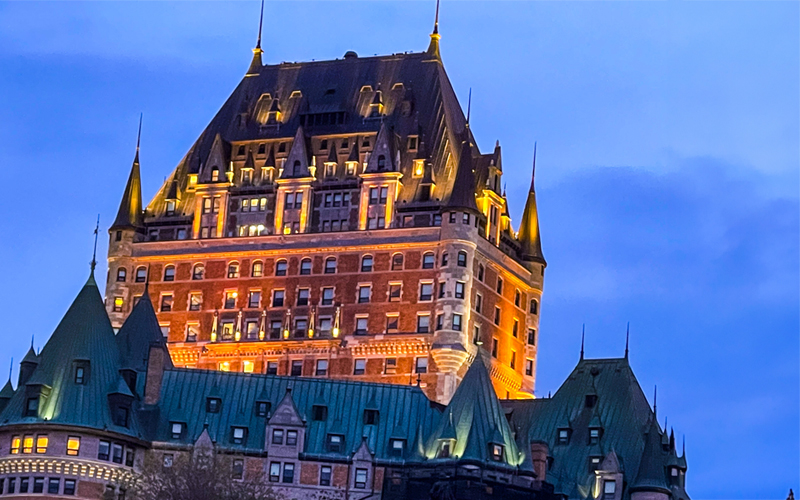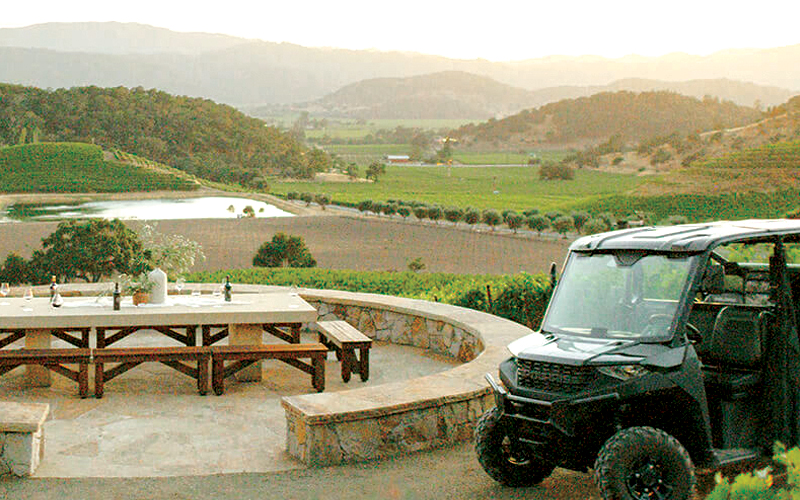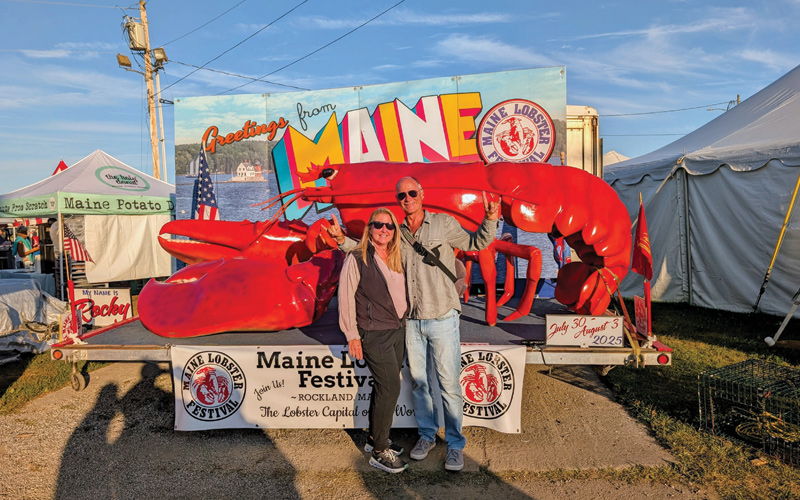A la Français: Quebec’s Fairmont Le Chateau Frontenac
An unwitting visitor to Québec City might be forgiven for thinking they’d been

transported to a French colony. A historic enclave straight out of Europe, with narrow, winding cobblestone streets that meander around the walls of medieval fortifications, the French-speaking city has an identity more Gallic than Canadian.
Indeed, French is the mother language of 85 percent of the citizens of Québec. Canada’s vast eastern province has its own identity — a joie de vivre, a zest for life that rivals that of the French countryside. The Québecois people are sophisticated and cosmopolitan, yet they share a love for the land, for the splendid forested backdrop and farm regions that envelop the wilderness and unique terroir.
Looming high above the St. Laurence River is the Fairmont Le Chateau Frontenac, a palatial, turreted castle that has become the Renaissance-style symbol of Québec City. Built by the Canadian Pacific Railway, it opened its doors in 1893 to promote luxury tourism. Some say it is the most photographed hotel in the world. It’s designed after chateaus in France’s Loire Valley and dominates the walled capital from any vantage point. Even after a multimillion-dollar renovation, the grand hotel keeps its Old World charm.
Québec City is a designated UNESCO World Heritage Site, and the best of it is within minutes of the property: more than 200 restaurants, grand churches, museums, historical buildings, quaint plazas and shopping streets. A funicular railway and an ancient staircase, Escalier Casse-Cou, lead to picturesque Petit-Champlain, acclaimed as one of the most beautiful streets in the world.
A living museum
Le Chateau’s ornate lobby, lined with wood and featuring onyx, glass and stone, is lit by 19th-century chandeliers. Nooks shelter antique sconces, many with gold-plated emblems, that create an authentic ambiance. A swooping Spanish-style staircase leads to massive grand halls with hand-painted ceilings. Blue colors represent the various palettes of the omnipresent St. Laurence River. Two specialty shops sell quality local and handmade items. On the boardwalk level, a museum-like walkway showcases historical artifacts and photos.
A full-service spa features a Swedish-style cedar sauna. Guests may sip tea in the relaxation room while waiting for a massage. The hotel also has a health club and a year-round indoor pool with a separate jacuzzi.
Rooms and suites
Le Chateau features 610 rooms and suites that vary in size and decor. Standard features include comfortable king and queen beds, a choice of feather or foam pillows, cable television, Keurig coffee machines, hair dryers, air conditioning, irons and ironing boards, and a mini-bar (not complimentary). Bottles of water, chocolate-covered strawberries and maple-flavored bonbons are complimentary.
Gold Level Rooms on the 14th to 18th floors come with panoramic river or city views and access to the exclusive Fairmont Club Member Lounge. Bathrooms include white marble, a signature of Fairmont properties, and Le Labo’s Rose 31 toiletries, scented soap, body wash, shampoo and conditioner.
Executive suites in Maxwell Tower, at the top of the castle, are named for dignitaries and celebrities whose presence once graced the landmark hotel, including movie director Alfred Hitchcock. The lavish Grace of Monaco suite remembers Princess Grace, who stayed in 1969 during Québec’s storied winter carnival. The carnival-hall chair where she sat to greet guests is displayed in the room, along with pieces on loan from Prince Albert’s royal collection of Monaco.
Dining experiences
Place Dufferin: A breakfast buffet is served in Place Dufferin, adjacent to Dufferin Terrace, where curling competitions were once held. Smoked fish, charcuterie and Québec’s award-winning cheeses are always served. More substantial items from the a la carte menu include classic French crepes with Québec maple syrup and eggs Benedict.
In the afternoon, Dufferin hosts Québec’s loftiest high tea—the crème de la crème, so to speak. LOT 35 teas are presented by tea sommeliers on English bone china from William Edward’s of London. Fluffy scones are slathered in Devonshire clotted cream and served with berry and marmalade preserves. A three-platter plate includes sweet, savory bites, salmon and cucumber sandwiches.
1608 Wine & Cheese Bar: The buzziest spot in the hotel is the 1608 bar, named after the year when Québec City was founded. Reservations are highly recommended. Built to resemble the radius of a clock, the 58-seat bar is considered one of the best in Canada. Its inventory features a signature Woodford Reserve Kentucky Straight Bourbon Whiskey, a 100 percent agave La Dama tequila, and vodka made with the chateau’s rooftop honey.
Le Sam Bistro: One of the city’s most popular restaurants, the casual Le Sam is named after Samuel de Champlain, who founded Québec City in 1608. While overlooking the St. Laurence, the Rockwell Group architect’s design elements represent vintage train cars in the CP Railway’s blue and gold colors. Classic cocktails — Manhattans, Old Fashioneds — are served with Le Sam’s signature poutine slathered with cheese curds and beef cheek.
Le Champlain Restaurant: The hotel’s primary restaurant, the 198-seat Le Champlain, is helmed by an acclaimed French chef. Stephane Modat elevates dishes like venison in a silky veal jus and Bay of Gaspé lobster with corn mousse. A stupendous tasting menu, paired with wines chosen by the sommelier, features seasonal flavors of Québec. The restaurant weaves through a variety of elegant rooms that create distinct dining areas.
Luxury French Cognac makers Louis XIII honored the deluxe castle with the prestigious honor of Fortress Destination. As such, Le Champlain houses legendary magnum crystal decanters of the most sought-after blend of 100 percent Grand Champagne, the first cru of the Cognac region.





